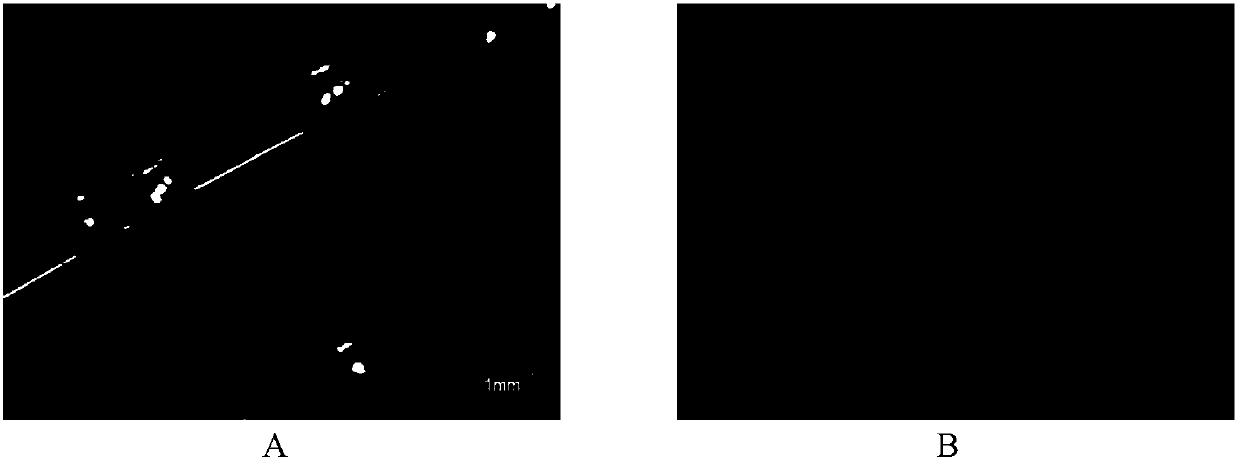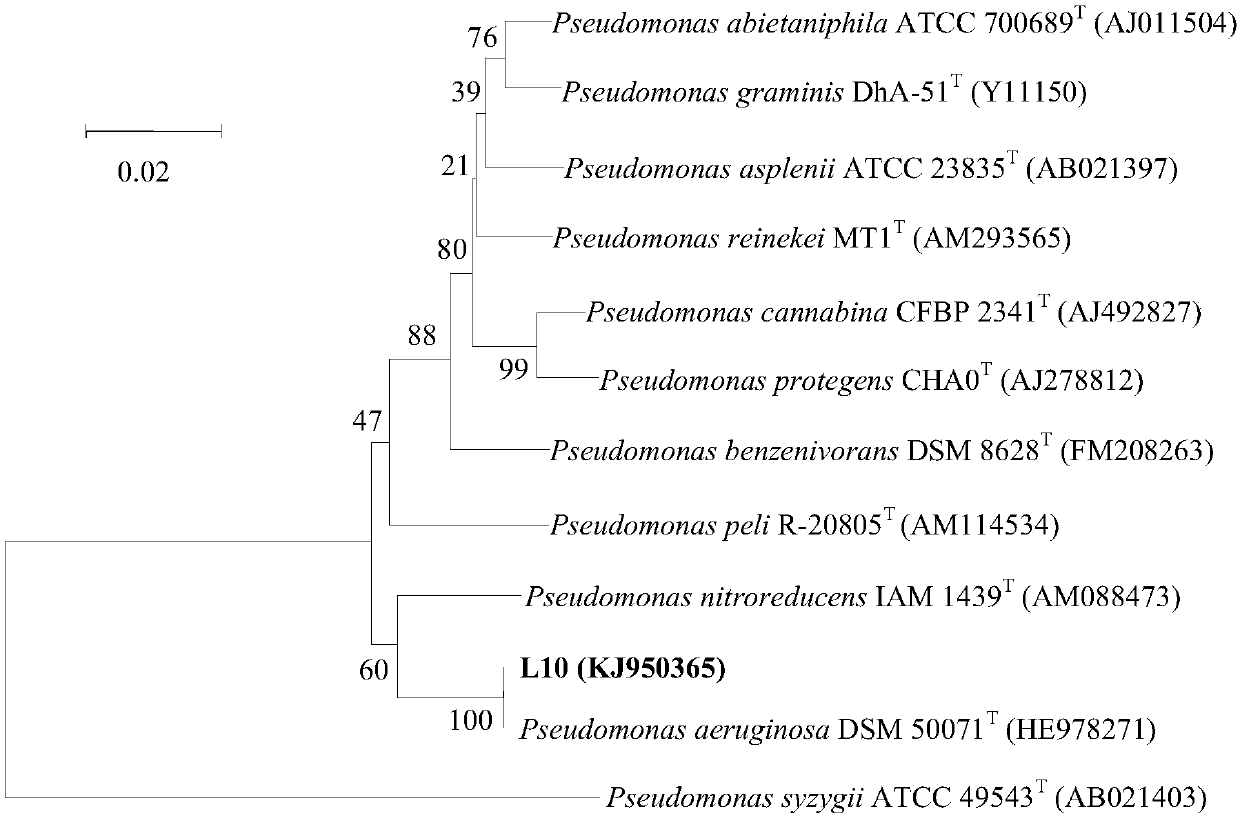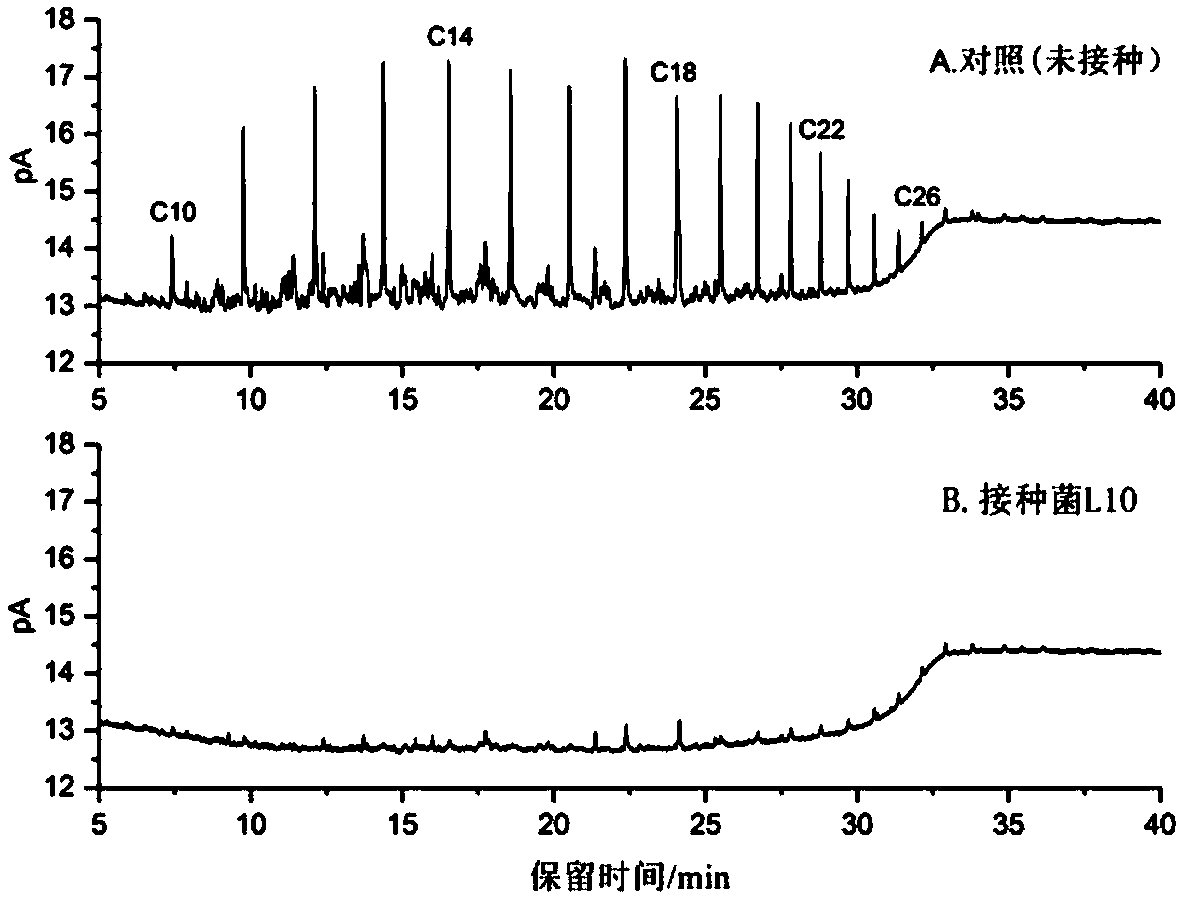Endophytic bacterium of halophyte plants and application of endophytic bacterium
A technology of endophytic bacteria and halophytes, applied in the field of microorganisms, can solve the problems of unseen patent research and application reports, few data reports, etc., and achieve the effect of promoting healthy growth of plants, increasing biomass, and increasing biomass
- Summary
- Abstract
- Description
- Claims
- Application Information
AI Technical Summary
Problems solved by technology
Method used
Image
Examples
Embodiment 1
[0046] Example 1: Isolation of Reed Endophytic Bacteria Degrading Petroleum Hydrocarbons
[0047] The wild plants of Phragmites reed growing healthily in oil-polluted heavily saline-alkali areas were collected, and the endophytic bacteria isolation and screening test was carried out immediately.
[0048] The whole plant was washed with tap water for 30 minutes, and then washed with distilled water for 3 times, each time for 3 minutes. Drain the water on the surface of the plant, divide the plant into three parts: root, stem and leaf, soak each part in 70% ethanol solution for 2 minutes, wash with sterile water for 3 times, then put it into 1.2% sodium hypochlorite solution for shaking for 30 minutes, rinse with sterile water for 3 minutes times, 2 minutes each time. Take 100 μL of sterile water for the last rinse, spread it on LB solid medium (yeast powder 5.0 g / L, tryptone 10.0 g / L, NaCl 10.0 g / L, agar 15.0 g / L, pH 7.4) and incubate for 24 h, Verify complete surface sterili...
Embodiment 2
[0049] Example 2: Screening, identification and preservation of reed endogenous growth-promoting bacteria that degrade petroleum hydrocarbons
[0050]Endogenous growth-promoting bacteria that efficiently degrade petroleum hydrocarbons were screened by measuring the ACC deaminase-producing activity, siderophore-producing ability, IAA-producing ability, phosphorus-dissolving ability and the ability to degrade total petroleum hydrocarbons in diesel oil obtained from the strains isolated above.
[0051] 1. Determination of ACC deaminase activity
[0052] 1-aminocyclopropane-1-carboxylic acid (ACC) in plants is a precursor for ethylene synthesis. Endophytic bacteria producing ACC deaminase can use this enzyme to degrade ACC into α- Butyruvate and ammonia reduce the concentration of ethylene under adverse conditions, reduce the production of harmful ethylene, and promote the rapid growth of plants.
[0053] Refer to Penrose D M and Glick B R [Document 15: Penrose D M, Glick B R. Me...
Embodiment 3
[0083] Embodiment 3: Effect of Pseudomonas aeruginosa L10 (Pseudomonas aeruginosa L10) degrading petroleum hydrocarbons under different NaCl concentrations
[0084] The pure hydrocarbons tested were three normal alkanes, n-undecane, n-hexadecane, and n-octadecane, and three polycyclic aromatic hydrocarbons, naphthalene, phenanthrene, and pyrene.
[0085] The number of prepared cells is about 1×10 8 The bacterial suspension of CFU / mL (referring to the method of embodiment 2), inserts the inorganic salt liquid culture medium (the content of single hydrocarbon substance is 200mg / L) with single hydrocarbon substance as sole carbon source by 5% inoculum size. Wherein, the NaCl concentration in the culture medium was respectively set to 2%, 4%, and 6% according to the strain tolerance. The culture medium without adding bacteria and adding a single hydrocarbon was used as the blank control, and three replicates were set up. The pH value was adjusted to 7.4, and after culturing on a...
PUM
| Property | Measurement | Unit |
|---|---|---|
| diameter | aaaaa | aaaaa |
Abstract
Description
Claims
Application Information
 Login to View More
Login to View More - R&D
- Intellectual Property
- Life Sciences
- Materials
- Tech Scout
- Unparalleled Data Quality
- Higher Quality Content
- 60% Fewer Hallucinations
Browse by: Latest US Patents, China's latest patents, Technical Efficacy Thesaurus, Application Domain, Technology Topic, Popular Technical Reports.
© 2025 PatSnap. All rights reserved.Legal|Privacy policy|Modern Slavery Act Transparency Statement|Sitemap|About US| Contact US: help@patsnap.com



